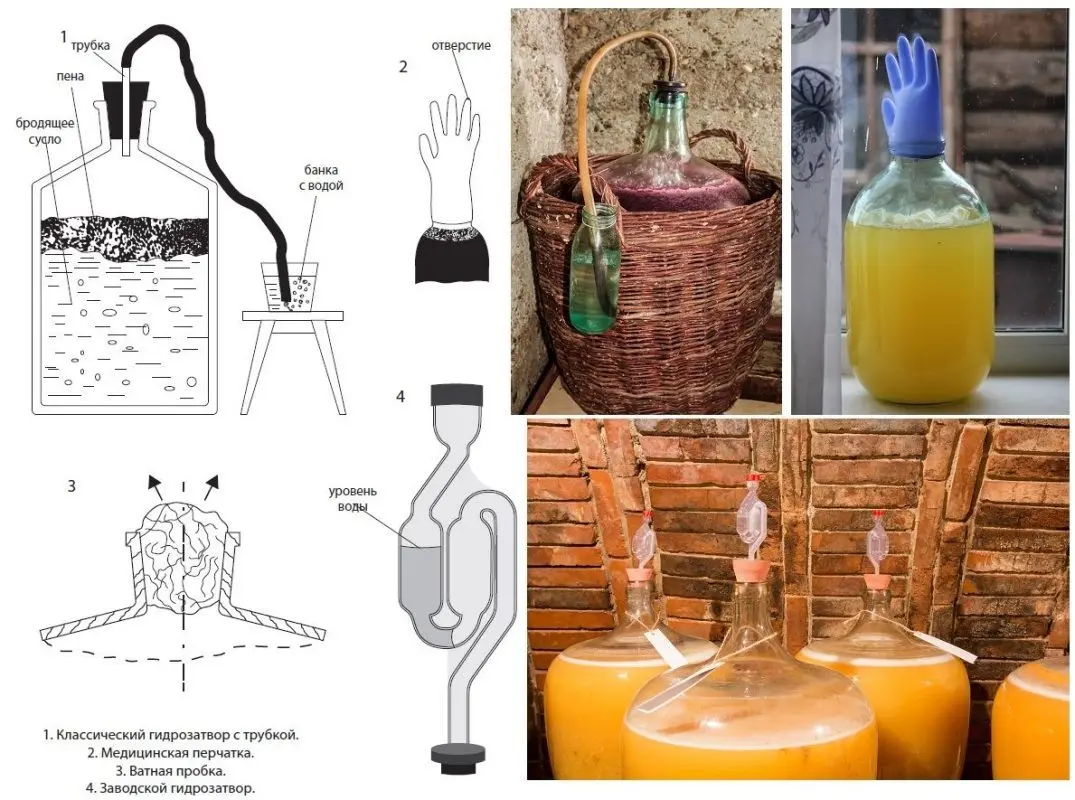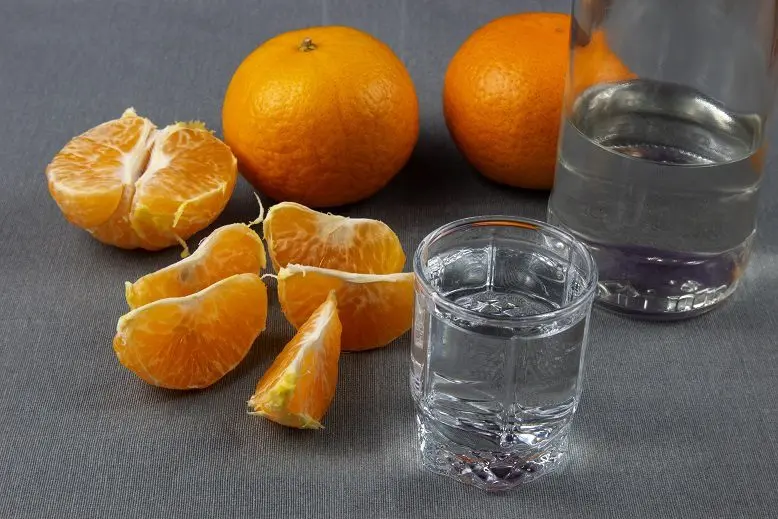Moonshine from tangerines is remembered for its characteristic citrus aroma and mild taste with subtle notes of tangerines in the aftertaste. First of all, this is a good option to process substandard raw materials or surplus crops, but for the holidays you can make a limited batch of tangerine moonshine from purchased fruits.
Theory
The average sugar content of tangerines is 8-10%, which means that theoretically from 1 kg of raw materials you can get up to 120 ml of moonshine with a strength of 40%, but in practice the yield will be 15-20% lower. To increase the amount of distillate, you can add sugar – 1 kg will additionally give 1,1-1,2 liters of forty-degree moonshine. But the more sugar, the less expressive the notes of tangerines become in the finished drink, so here you need to find a compromise between quantity and quality.
If there is a lot of raw materials, it is ripe and sweet, then you can make tangerine mash without sugar. However, if there are few fruits or they are sour, then it is advisable to add sugar.
It is best to ferment tangerine mash with wine yeast (optimal for white wines) or home-made raisin sourdough, in which case the aroma will be without alcohol tones, and the taste will be mild. The lack of wine yeast is a long fermentation (30-45 days). On alcohol, dry or pressed baker’s yeast, tangerine mash will win back in 4-10 days, but the moonshine will turn out not so soft and fragrant.
Ingredients:
- tangerines – 10 kg;
- water – 2 liters + 4 liters for each kilogram of sugar added;
- sugar – 1-3 kg (optional);
- yeast – for 18-20 liters of wine or alcohol must, or 60 g of dry or 300 g of pressed bakery.
Mandarin mash recipe
1. Go through the fruits, removing blackened, rotten and moldy. Even one spoiled tangerine can spoil the entire batch of drink. The problematic parts of the fruit must be cut out.
2. Peel the tangerines. Peels of 5-6 fruits can be used in the distillation process to enhance the tangerine aroma and taste.
The peel contains too many essential oils, if you put the mash together with the skins, then the moonshine will have a persistent smell of cologne.
3. If there are few seeds in tangerines, pass the pulp through a meat grinder. If the seeds are common, mash the fruits with your hands or in another way, trying to damage the minimum number of seeds so that the finished drink does not taste bitter.
4. Place the juice together with the pulp in a fermentation container. Add water and sugar. Stir until the sugar is completely dissolved. Fill the container to a maximum of 75% of the volume, leaving room for carbon dioxide and foam.
5. Add yeast according to the instructions on the package, if necessary, pre-dissolve. Close the wort with a water seal of any design (even a medical glove with a hole in one of the fingers will do).

6. Transfer the tangerine mash to a dark room with a stable temperature of 20-28 °C. Leave until the end of fermentation. The end of the process is indicated by the absence of gas from the water seal (deflated glove), a slightly bitter taste without sweetness, a layer of loose sediment at the bottom and a significant clarification of the mash.
Getting tangerine moonshine
7. Strain the tangerine mash that has won back through 2-3 layers of gauze, squeeze the pulp well. Without filtration, particles of pulp can burn, spoiling the taste of moonshine with bitterness.
8. Drive the mash for the first time at maximum speed without separation into fractions. Finish selection when the strength in the jet falls below 25%.
9. Measure the strength of the resulting moonshine. Calculate the amount of pure alcohol (strength in percent multiplied by the volume in liters and divided by 100).
10. Dilute the distillate with water up to 18-20% vol. Make a second run.
To enhance the tangerine aroma and taste in the finished moonshine, it is advisable to add 5-2 tangerine peels to the steamer for 3 liters of moonshine before re-distillation (or hang it in a gauze bag in a cube).
11. Collect the first 10-15% of the yield from the amount of pure alcohol in a separate container. This harmful fraction is called “head” and you can not drink it.
12. Select the main product (“body”) until the strength in the jet falls below 45%. Then stop the distillation or collect the “tails” separately to add them to a new batch of mash.
13. Dilute the “body” of tangerine moonshine with water to a drinking strength of 40-45% vol., pour into glass jars or bottles, close tightly.
14. Leave the finished tangerine moonshine in the refrigerator or basement for 3-4 days to stabilize the taste after mixing with water.










